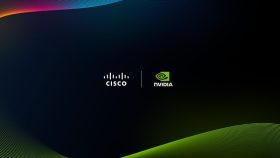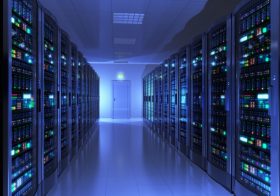New Report! Observability, AIOps, and NetDevOps

AI sounds great—in practice—but what does it mean for cloud infrastructure automation? So far, it's been accelerating many of the existing trends: more data, more bandwidth, more infrastructure.
Indeed, AI is driving the need for more data, more connectivity, and more clouds. It will also drive the need for better infrastructure observability and automation. Infrastructure continues to become more virtualized and distributed. In fact, we’d take it a step further. Most enterprise AI use cases are an extension of the existing hybrid cloud infrastructure.
More Demand for Cloud Automation
As AI drives the need for more of everything, the humans won't be able to keep up.
To provide the infrastructure for this hyper-distributed infrastructure and data environment, the next-gen hybrid cloud infrastructure will require more automation than ever before. It’s no longer possible to manually connect, monitor, and operate cloud infrastructure. The scale of data, connectivity, and storage is too vast. As organizations seek more flexible and affordable cloud platforms for managing data and applications in both on-premises and public cloud environments, the demand for cloud automation technologies is greater than ever before.
“That phenomenon is going to accelerate,” François Locoh-Donou, the CEO of F5 told me in a recent interview. “What we see happening with modern applications—they are broken into microservices and distributed. We think we have entered the world of distributed applications.”
As the move to the cloud accelerates, there is also growing interest in combining or using a variety of cloud platforms and services, including private datacenter resources—a movement known as hybrid cloud. Organizations are considering using hybrid and multicloud approaches to enable many forms of cloud services to provide better flexibility, greater scale, and lower cloud costs. This approach can also help them hedge their investments by avoiding lock-in to specific cloud service providers.

A Deep Look at Observability, AIOps, and NetDevOps
In this report, Futuriom analysts gathered data from our proprietary survey and databases, as well as public information of record, to put together a composite of how three key technology areas will enable cloud automation: observability, AIOps, and NetDevOps. These automation technologies are evolving to support the next transformation of cloud infrastructure. In the report, we’ll share information from our database of hybrid cloud use cases, interviews with end users, as well as information from cloud platform and automation vendors.
Futuriom believes these trends will drive the development of a new market for multicloud and hybrid cloud automation tools, including observability, AIOps, and NetDevOps. For the purposes of this report, we categorize these tools as the following:
Cloud observability: Observability describes tools that can be used to monitor, analyze, and troubleshoot cloud-based applications. This can include collecting telemetry data, including logs, metrics, and traces.
AIOps: Artificial intelligence for operations (AIOps) uses AI to build automation of operations using analytics and machine learning (ML). This can be a complex task that includes gathering data from a wide variety of sources, including observability tools and existing network, storage, and compute infrastructure.
NetDevOps: NetDevOps is a way to build network automation into the application development process, so that an application can understand the infrastructure needs and be programmed to create networking resources on demand. It also helps to dynamically monitor, adjust, and understand the interaction between the applications and the network environment.
As you can see, all of these areas are interrelated, which is the point of this report. To deliver true cloud infrastructure automation, it’s important that technology in the areas of observability, AIOps, and NetDevOps work together. In the industry at large, there are already significant partnerships and integrations occurring in these areas, which we will outline in this report.
Companies (vendors) mentioned in this report: Aviatrix, BigPanda, Broadcom, Cisco, Chronosphere, Dynatrace, Gigamon, HashiCorp, IP Fabric, Kentik, Prosimo, Selector, UBiqube, Virtana
Special thanks to our sponsors Aviatrix, Itential, and Kentik.
Download the Report Now!























